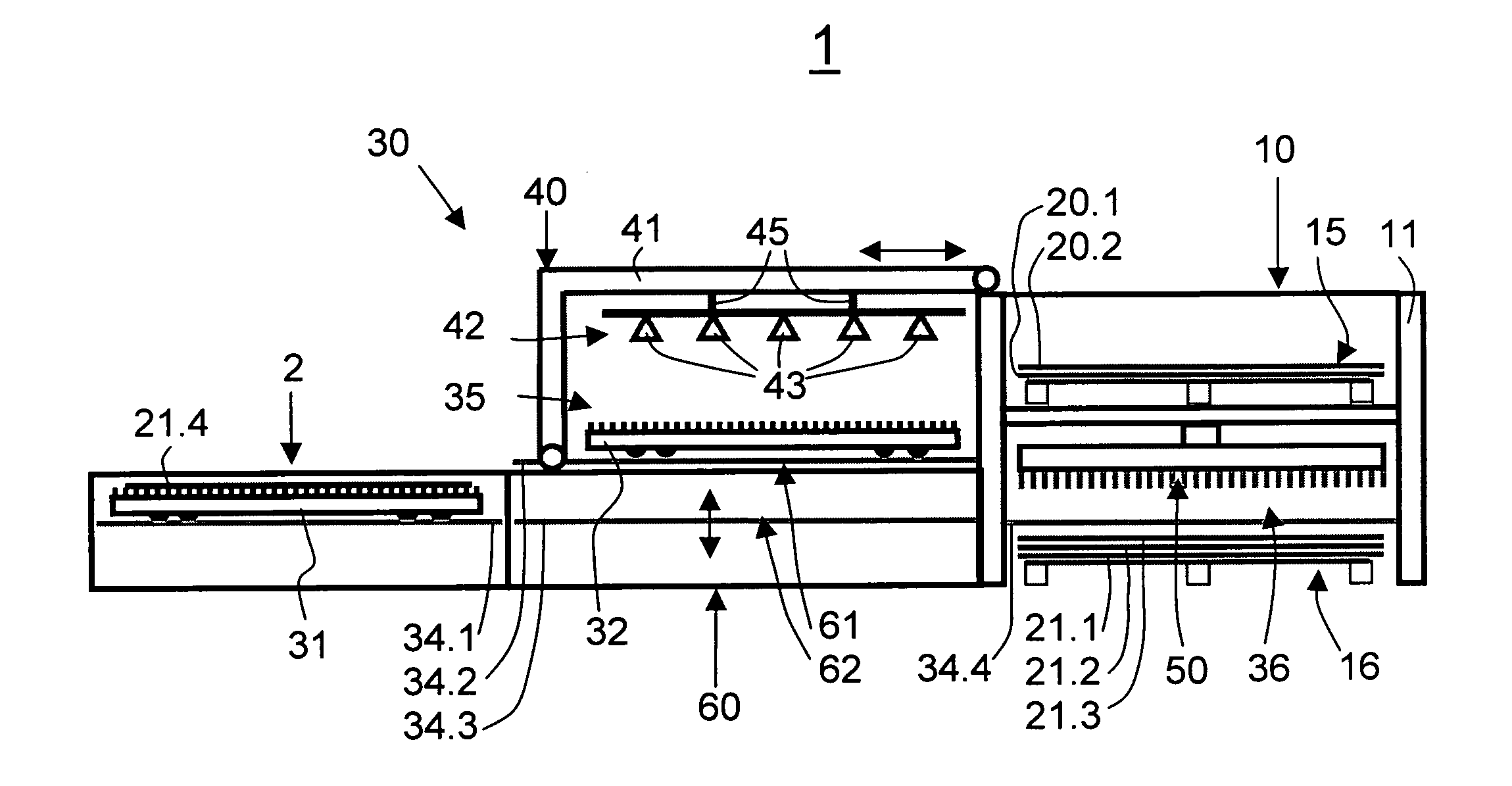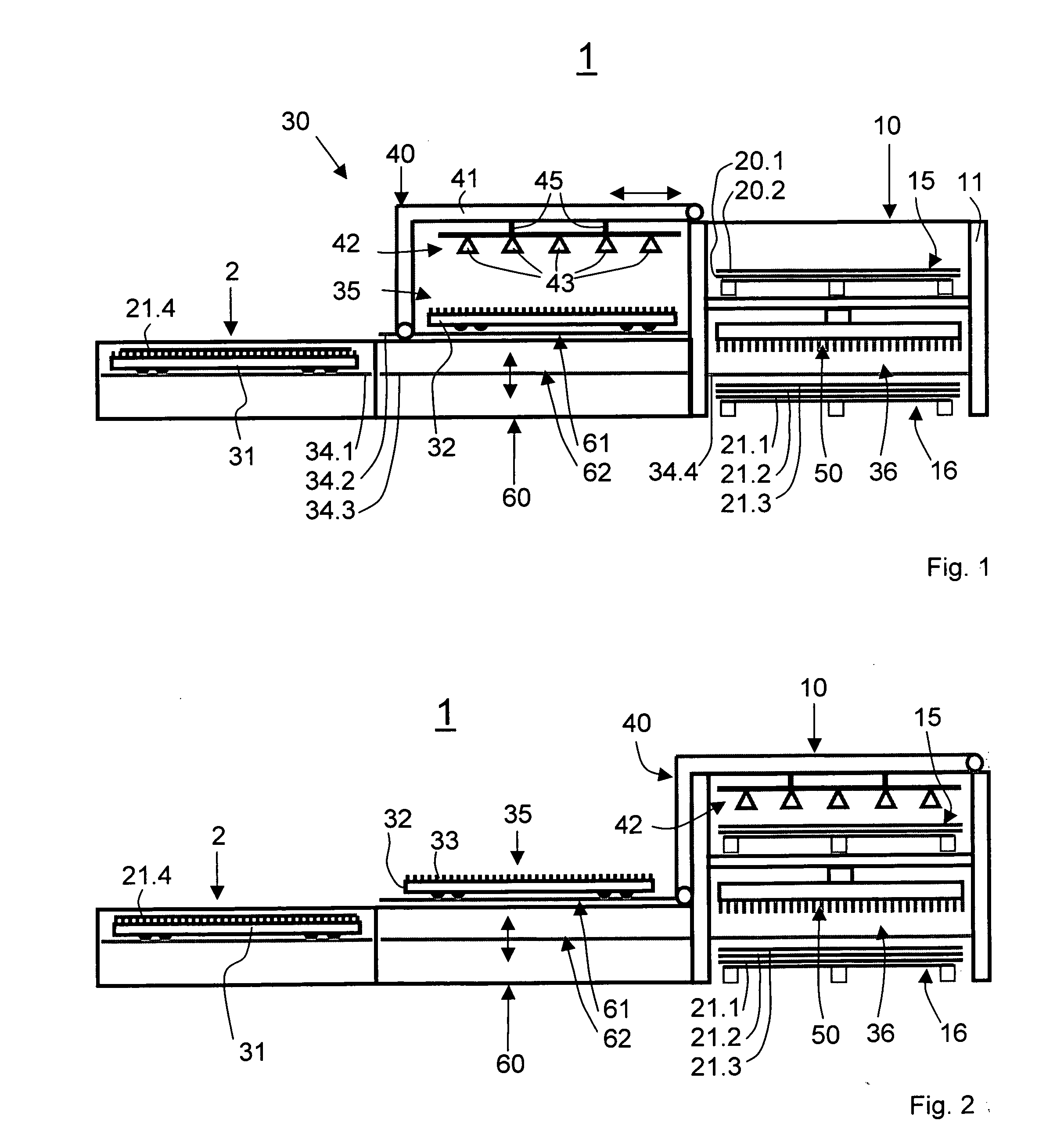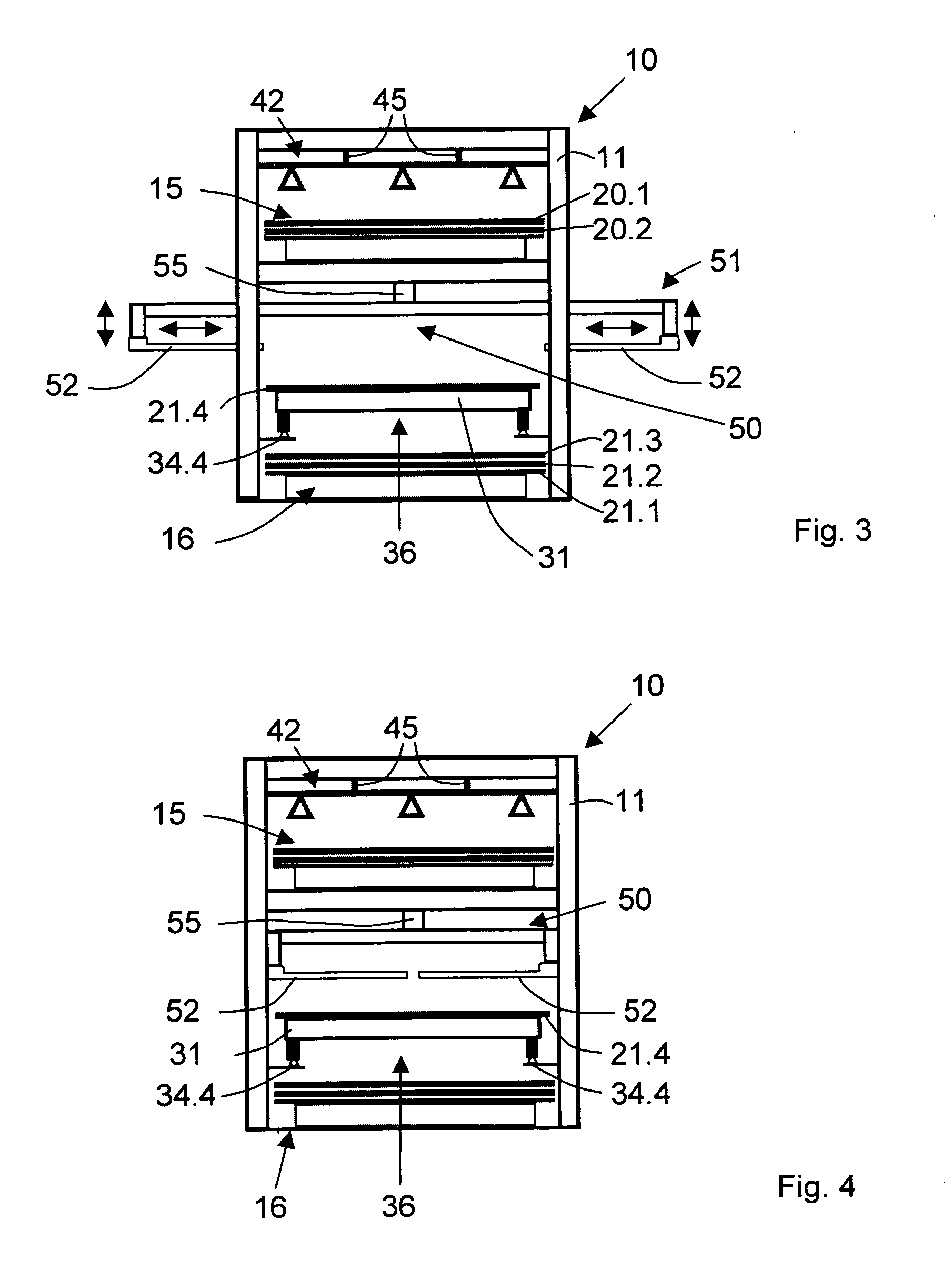Device and method for loading and unloading a machining machine for machining boards
a technology for machining machines and machining boards, which is applied in the direction of metal-working holders, large fixed members, supporters, etc., can solve the problems of machining systems that should take up the least amount of space, changing tables are not readily accessible, and boards must be moved horizontally and vertically. it is easy to load and unload changing tables and reduce the time required for loading and unloading. , the effect of simplifying the loading and unloading
- Summary
- Abstract
- Description
- Claims
- Application Information
AI Technical Summary
Benefits of technology
Problems solved by technology
Method used
Image
Examples
Embodiment Construction
[0039]FIG. 1 shows an automatic machining system 1 for boards, including a machining machine 2 for machining boards, a storage system 10 for boards that are to be machined and boards that have already been machined and a conveyance device 30 for conveying the boards that are to be machined and for conveying the boards that have already been machined between the storage system 10 and the machining machine 2.
[0040]The machining machine 2 may be, for example, a machine for cutting boards, which is therefore equipped with a cutting tool (e.g., a mechanical cutting tool, a device for laser cutting, a device for water jet cutting, etc.). However, the type of machining of the boards is not relevant within the scope of the present invention. The present descriptions of the machining system 1 therefore do not include any details indicating the type of machining and / or any concrete machining operation.
[0041]In the present discussions of the machining system 1, different boards to be machined ...
PUM
| Property | Measurement | Unit |
|---|---|---|
| area | aaaaa | aaaaa |
| distance | aaaaa | aaaaa |
| height | aaaaa | aaaaa |
Abstract
Description
Claims
Application Information
 Login to View More
Login to View More - R&D
- Intellectual Property
- Life Sciences
- Materials
- Tech Scout
- Unparalleled Data Quality
- Higher Quality Content
- 60% Fewer Hallucinations
Browse by: Latest US Patents, China's latest patents, Technical Efficacy Thesaurus, Application Domain, Technology Topic, Popular Technical Reports.
© 2025 PatSnap. All rights reserved.Legal|Privacy policy|Modern Slavery Act Transparency Statement|Sitemap|About US| Contact US: help@patsnap.com



